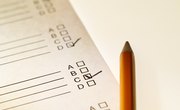To get accepted to an accredited optometry school in the US, applicants must pass the OAT, the Optometry Admission Test. The OAT tests your academic knowledge of the natural sciences (college level bio and chem), physics, reading comprehension, and high school math.
The test is administered on the computer and the scores range from 200 (low) to 400 (high). Optometry schools look closely at your OAT score, as well as your GPA, essays, and letters of recommendation. If you want to ace the OAT exam, follow these strategies.
Read the exam specifications on the OAT registration page. (Because the OAT exam was developed by the same people who made the the DAT, you will actually find the OAT exam webpage on the ADA website. Just type /oat/index.html after the main url.) Download the examinee guide and sample tests so that you have some official practice materials.
In addition to taking the OAT official practice test, you should also get an OAT study guide published by one of the major test prep companies. The best OAT study guides will have timed practice tests on CD, so you can get comfortable taking the exam on computer.
Review college level cellular biology, as well as general and organic chemistry. Chemical reactions are heavily tested, and the most difficult questions deal with organic reagents.
Review principles of physics. Mechanics, electromagnetism, and of course optics are tested. There are very few computational problems, and only only basic arithmetic is needed. The main focus is on concepts, not problem solving.
Practice reading long passages on the computer screen. The OAT reading passages are not particularly difficult, but they are long and technical, and reading on the computer takes some getting used to. The more you practice this, the better you will perform on test day.
Practice doing multiplication, addition, division, subtraction, and simple algebra by hand. The OAT quantitative section covers basic high school algebra, geometry, and arithmetic, but no calculators are allowed.
Make timed practice quizzes for yourself so that you can not only answer questions correctly, but also quickly. If you have to guess on some questions, it is better to do that than to leave them blank, since there is no extra penalty for wrong answers.
The night before the exam, get a good rest. Try not to cram, just take the day off to relax. Eat a healthy breakfast in the morning and try not to get nervous. Visualize yourself earning a high score as a reward for all your hard work.
Related Articles
Writer Bio
This article was written by the CareerTrend team, copy edited and fact checked through a multi-point auditing system, in efforts to ensure our readers only receive the best information. To submit your questions or ideas, or to simply learn more about CareerTrend, contact us [here](http://careertrend.com/about-us).








